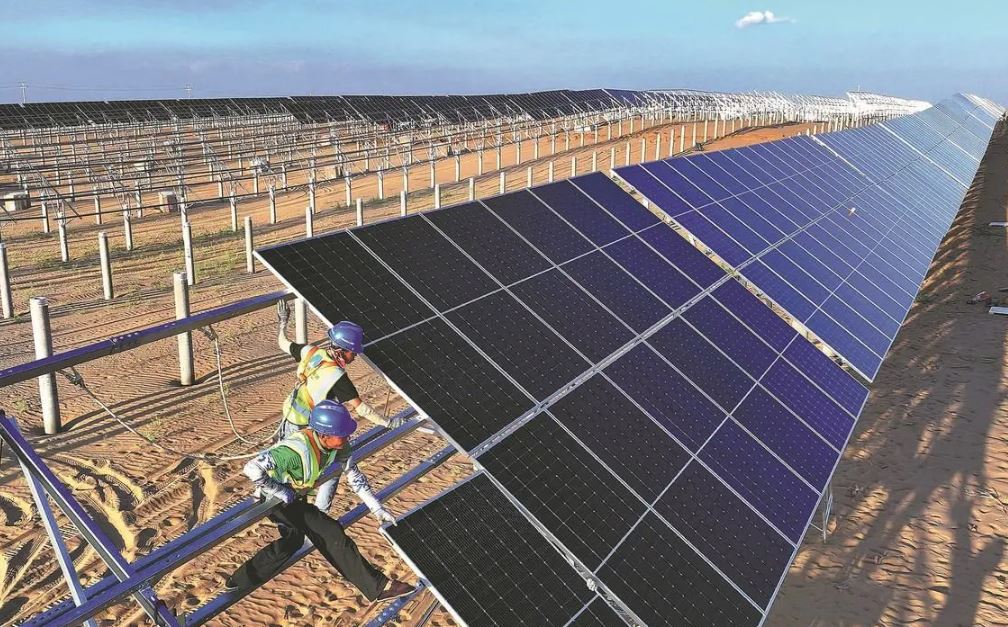
China is constructing an ambitious solar energy project nicknamed the "Solar Great Wall" or "Photovoltaic Great Wall" in the Inner Mongolia Autonomous Region. This massive initiative aims to combine renewable energy development with efforts to combat desertification. Here are the key details of this groundbreaking project:
Project Overview
The Solar Great Wall is a colossal photovoltaic (PV) installation spanning the northern edge of the Kubuqi Desert in Dalad Banner, part of Ordos City in Inner Mongolia.
. The project's impressive scale includes:
- Total length: 400 kilometers
- Average width: 5 kilometers
- Total installed capacity: 100 million kilowatts
- Expected annual electricity generation: 180 billion kilowatt-hours by 2030
Environmental Benefits
This innovative project serves multiple environmental purposes:
- Desertification Control: The solar panels act as windbreaks and sand binders, helping to prevent soil erosion.
- Water Conservation: The panels provide shade, reducing evaporation of soil moisture by 20-30%.
- Yellow River Protection: The installation serves as a first line of defense against desert sand blowing into the Yellow River, protecting its water quality.
Economic and Social Impact
The Solar Great Wall project is expected to bring significant economic benefits to the region:
- Job Creation: Approximately 50,000 job opportunities by 2030.
- Income Generation: Average annual income for workers involved is projected to be over 20,000 yuan (2,815 U.S. dollars).
- Energy Supply: By 2030, Dalad will be able to transmit 48 billion kWh of green electricity per year to the Beijing-Tianjin-Hebei region.
Innovative Approach
The project employs a unique "three-in-one" model that combines solar energy generation with agriculture and animal husbandry:
- Solar panels are installed on top.
- Plants grow on the ground beneath the panels.
- Small livestock graze under the panels.
This approach maximizes land use efficiency and provides both economic and ecological benefits.
Progress and Future Plans
As of 2024, significant progress has been made:
- A 1 million kilowatt PV base is already operational in the Kubuqi Desert.
- Dalad Banner plans to install new energy capacity totaling 195.5 million kilowatts, with around 147.5 million kilowatts from solar power.
By 2030, the project is expected to be at full capacity, potentially generating enough electricity to power Beijing and its surrounding areas.











